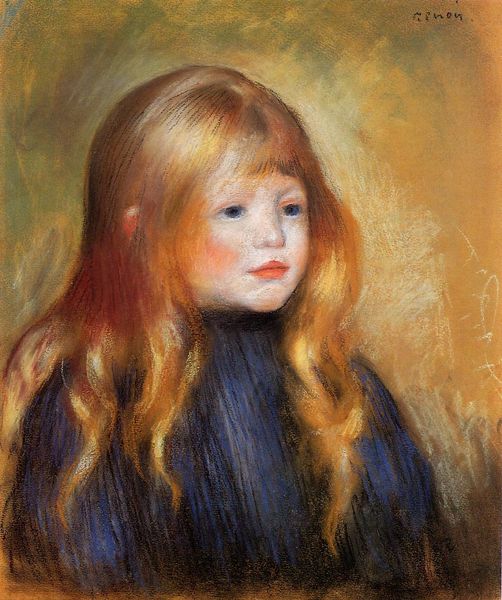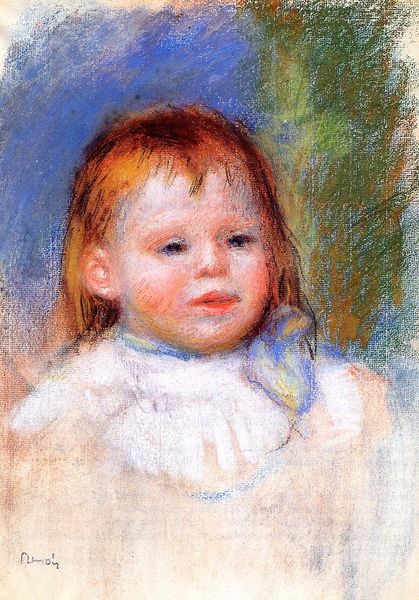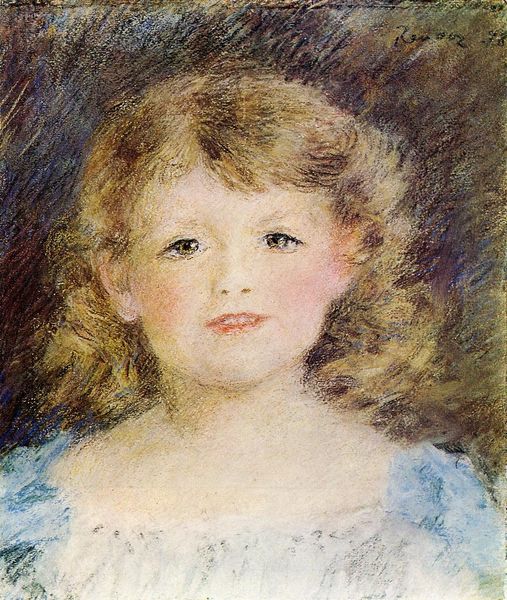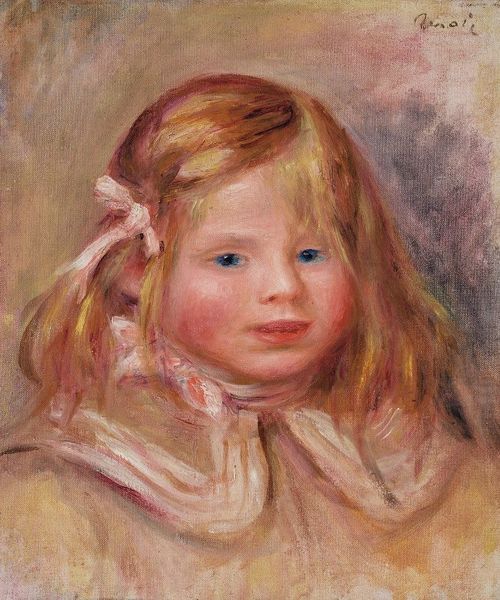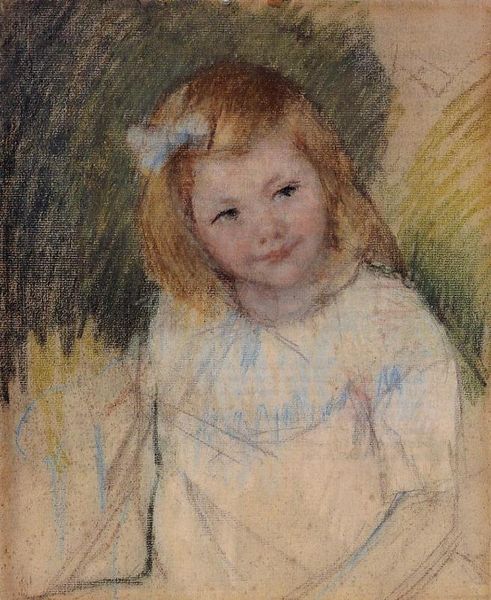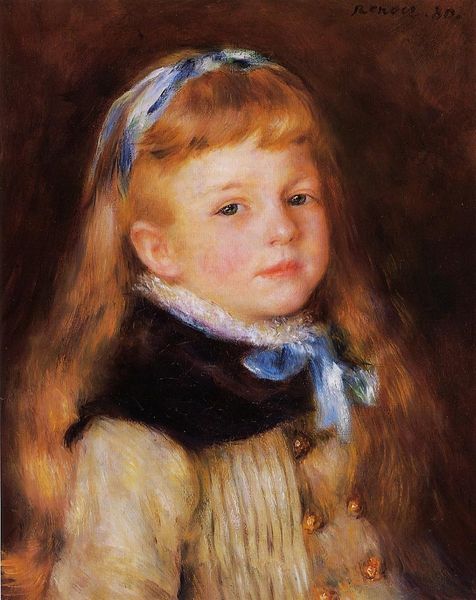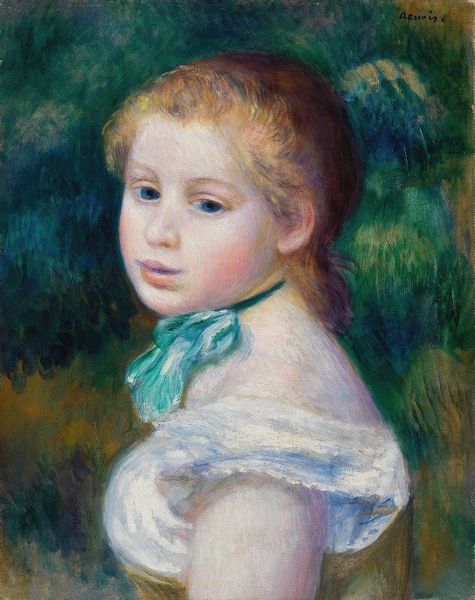
painting, pastel
#
portrait
#
painting
#
impressionism
#
figuration
#
pastel
#
academic-art
Copyright: Public domain
Editor: So here we have Renoir’s "Portrait of a Little Girl," created around 1880 using pastel on paper. There's something incredibly delicate and fleeting about it, especially the soft focus and subtle blending of colors. What's your perspective on this portrait? Curator: It's crucial to consider the cultural context in which Renoir was operating. This piece, while seemingly a simple portrait, reflects the evolving role of children in art and society. How do you think the rising middle class impacted the prevalence of childhood portraiture? Editor: Hmm, I hadn’t thought of that. More disposable income would mean more commissions for portraits, especially of loved ones like children. It definitely suggests a shift in social values, putting more focus on the individual, even at a young age. Curator: Precisely. This also reflects Impressionism’s departure from rigid academic styles towards capturing fleeting moments. Notice the quick, almost sketch-like quality. It speaks to the industrial era's obsession with speed and novelty. Editor: That makes sense! The loose brushstrokes do convey a sense of immediacy. Do you think that there’s also commentary about the construction of innocence? Curator: It's a very compelling reading. During this era, how were notions of childhood innocence culturally constructed, particularly for young girls from privileged backgrounds? Consider how social expectations may shape our interpretation of the girl's somewhat serious, contemplative gaze. What did childhood innocence signify at that time? Editor: I'm beginning to understand how this seemingly simple image holds so much about the time and societal pressures regarding class. Thanks for pointing it out! Curator: And I'm grateful for your insightful questioning. It’s important to always challenge our perspectives.
Comments
No comments
Be the first to comment and join the conversation on the ultimate creative platform.
